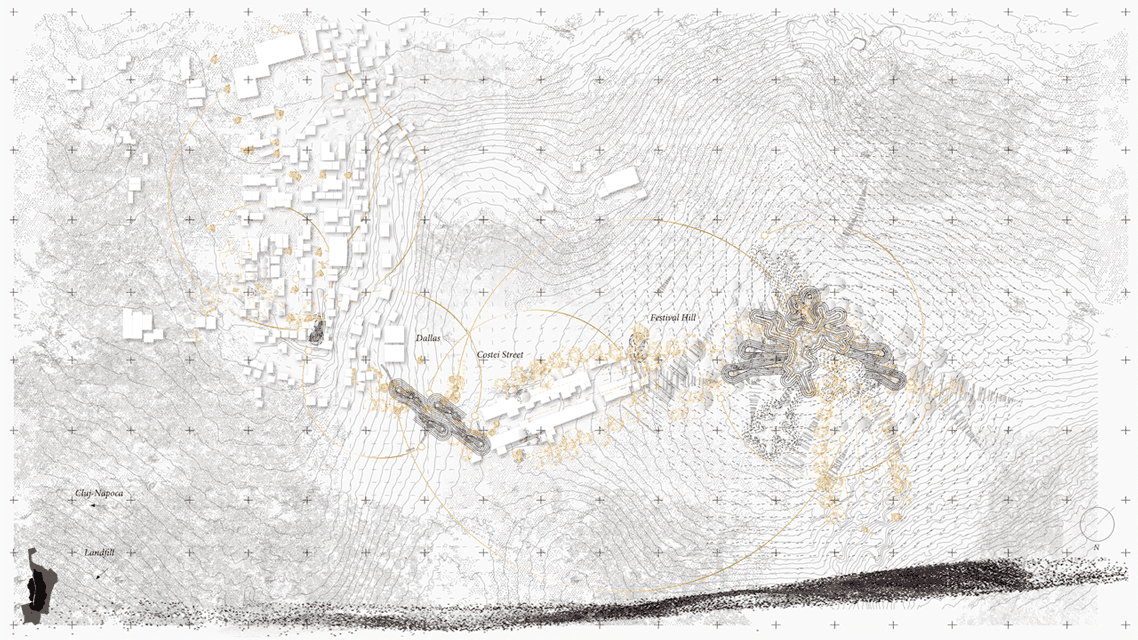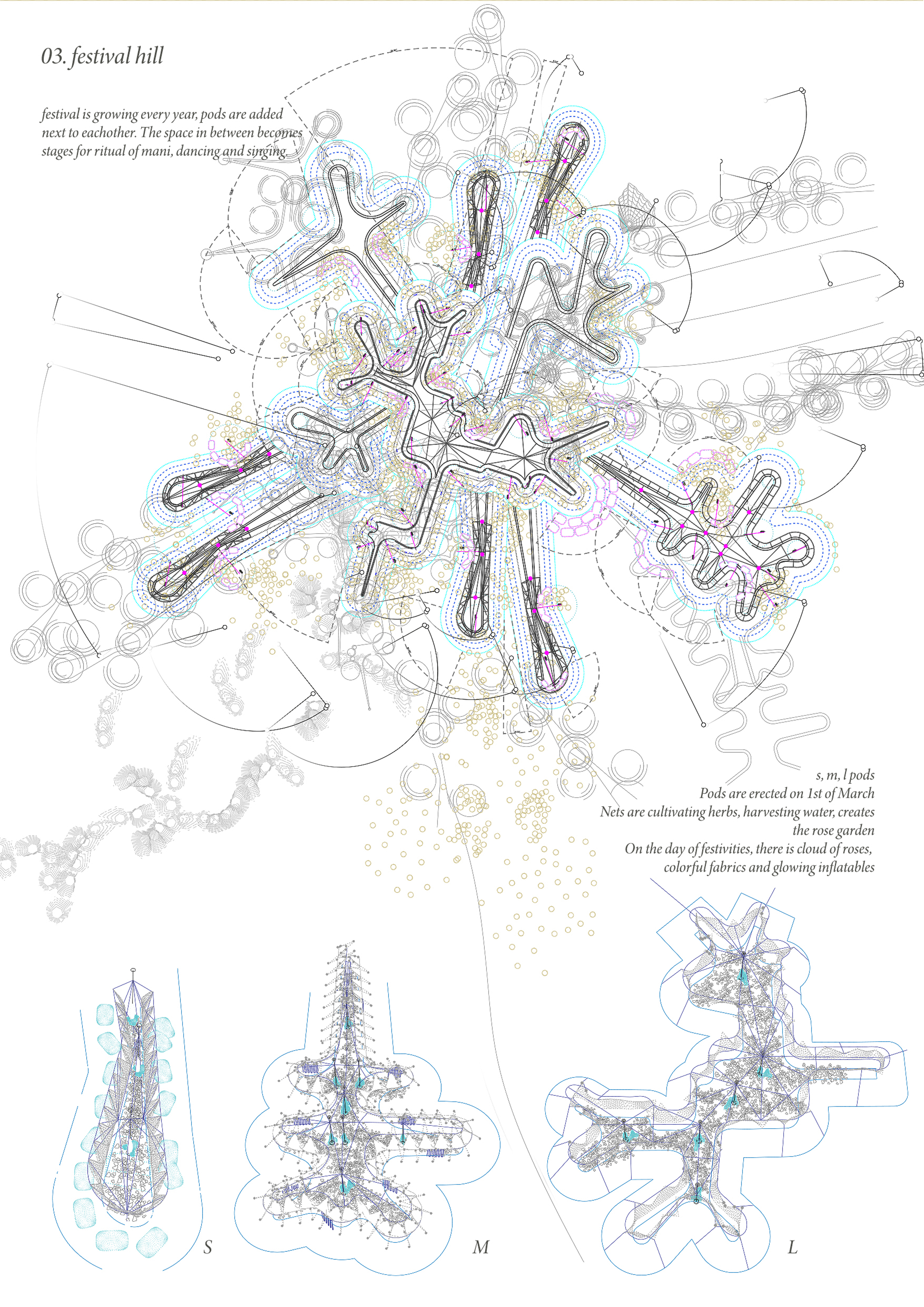


to Bloom to Glow to March
As Ranciere points out in the book Politics of Aesthetics (2015), what is possible to see and hear, to say and think, to do and make is usually destined by exclusionary politics. This forms the conditions of inclusion or exclusion of a community. Pata-Rat is the house of socially, environmentally, culturally segregated Roma Community. Therefore, to bloom, to glow, to march aims to rethink of Romani festivals as instant visibility and exchange tool for Pata-Rat to fight against the systematic invisibility of this community, while improving the living conditions on-site.
The project proposes a series of festival artifacts that serve for the yearly ritual of celebrating spring, then re-placed in the settlement to serve the daily rituals. During the summer of celebrations, collected water is cultivating herbs and flowers for Ederlezi rituals. [TO BLOOM]. The fountain, the feast, the fire hill, and shelter are built by fabrics and inflatables that are playing with degrees of transparency and light conditions [TO GLOW].
The artifacts travel, opens up in festival during summer spectacles on the hill, and when in the settlement during winter, it is covered with additional layers for protection, creating the shelter. By the movement and evolution of artifacts, it is a ritualized way of negotiating the space. This new definition of festival architecture is learning from Romani festival rituals’ spatial implications, challenging the idea of permanency and ephemerality while combining the spectacle and practicality. The final move [TOMARCH] is marching back to the city, imagined as the Romani parade. They carry artifacts that are blooming and glowing, therefore transforming the festival artifacts into the community’s self-representation, to an exchange tool to foster conversation. Through this joyful march, they are taking their rights back by celebrating the protest to reclaim their space in the city.





